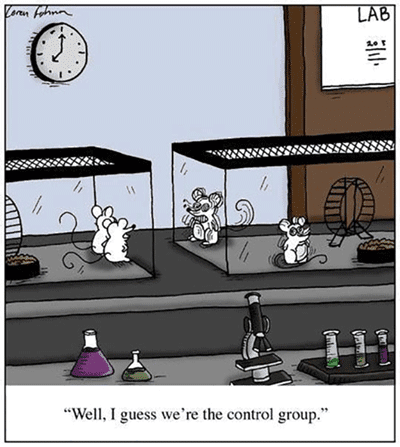When you have a rare disease like chronic granulomatous disease (CGD) and have spent the better part of your life being poked and prodded by (hopefully) well-meaning doctors, it’s easy to feel like a “Lab Rat.”
And that’s definitely not a good feeling.
But what if we said that “Lab Rats” can change lives? And by “Lab Rats,” we mean Lab Mice. Real ones.

As explained in the February 2015 issue of Journal of Allergy and Clinical Immunology, Donna Bratton, M.D., is looking into how the drug pioglitazone could reduce inflammation in patients with CGD.
She got the idea after seeing how pioglitazone worked to reduce inflammation in animal models. She thought to herself, Hmmm, how would this apply to other inflammation?
So Dr. Bratton, along with her colleagues, put her question to the test. They’ve run two research models involving mice to explore her hypothesis.
You can read more about that study here, but fair warning: it can be a little hard to follow if you don’t know what a phagocyte is off the top of your head.
To help you out, we’ve put together a quick overview of the immune system to explain what Dr. Bratton’s work is all about.
Also, because we’ve got a theme going on here, we used a mouse as a visual guide.
Let’s call him Greg.

Okay, so pretend mice, in general, are phagocytes: cells in the body that ingest harmful foreign bodies and dead cells that cause inflammation.
And now pretend those harmful bodies and cells are cheese.

Our immune system is all about eating the grossest of cheeses so they don’t make us sick. But just as there are all kinds of mice in the world, there are also all kinds of phagocytic cells.
Greg, the big ol’ hungry cutie, happens to be a macrophage. In simple terms, he’s a “big eater” who munches on the bad cheese that often appears, say, in the tissues of your body and at sites of infection.

However, Greg is not always the smartest of mice, especially in patients with CGD. Sometimes, he just does not eat the cheese.
That’s where PPAR gamma comes in. This protein helps control the activation in these macrophages and tells the cells what to do.
It’s basically the King of Mice.

Unfortunately, in patients with CGD, PPAR gamma doesn’t necessarily work on its own. So pioglitazone activates the protein and gets the immune system rolling.
Pioglitazone activates PPAR gamma. PPAR gamma helps control Greg. Greg eats the cheese.

Of course, Greg is not a suitable visual metaphor for all of the immune system’s complexities. University of Illinois breaks down of the immune system and its intricacies of macrophages, phagocytes, and everything in-between (which are all sadly rodent-less).
Luckily for mice everywhere, Dr. Bratton’s research has shown great promise and will begin the new phase of human trials will begin in 2016.

If Greg the mouse helped you understand this new breakthrough drug to help CGD patients, share it with others to help fill them as well (pssst use the button below).


